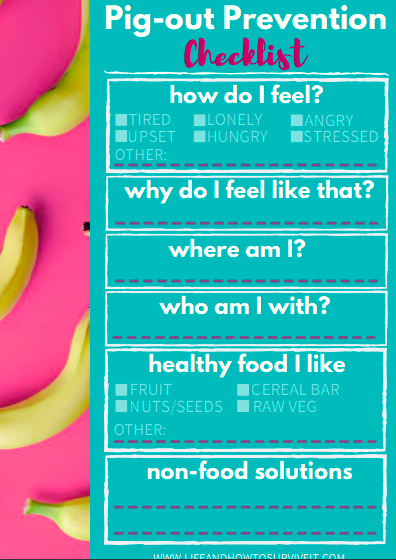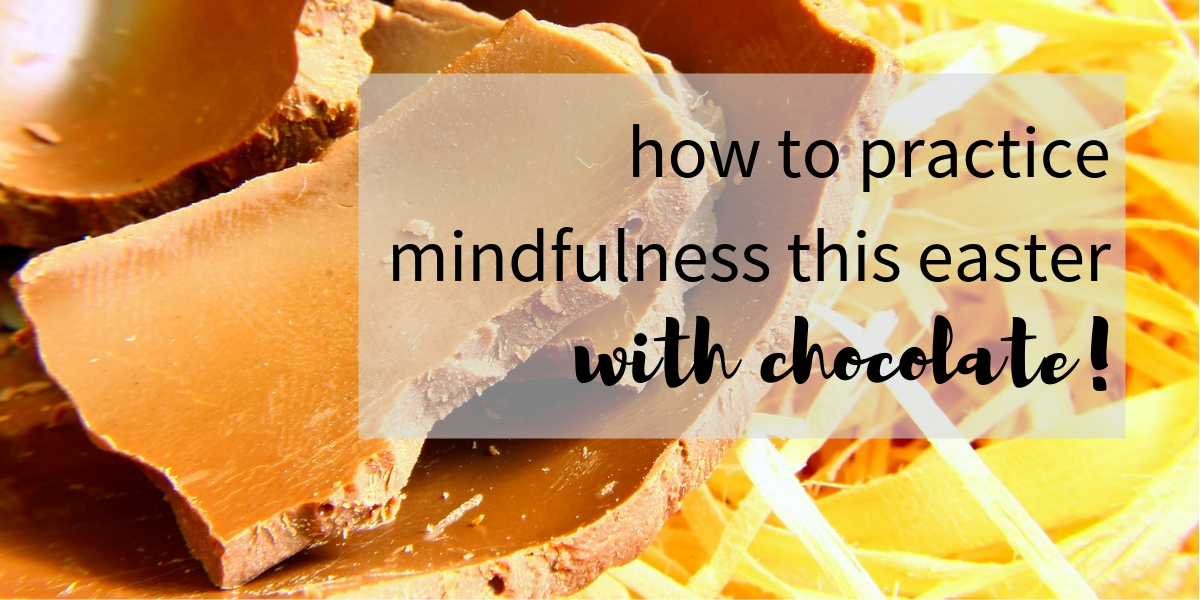Are you familiar with the practice of mindfulness? This is a lovely, fun example of the practice, and perfect to try with Easter coming up. All you need to try out this sensory mindfulness exercise with chocolate is a chocolate easter egg!
How do you usually eat chocolate? Slowly, savouring every mouthful? Or do you find it so irresistible that it disappears the moment you open the wrapper? Perhaps like me, you like to keep it in the fridge so it will be cold and crunchy when you feel like a nibble? However you usually eat it, after doing this mindfulness practice you might come to appreciate chocolate in a different light!
I did the exercise with a small easter egg, since I’m not a fan of the typical, empty brittle types, but I do love the solid consistency of the mini egg varieties. Whats more, I chose a mini egg with a crunchy middle, which added to the textural sensation. Whichever type of egg you choose, follow the steps relating to that type of egg.

Mindfulness Practice With Chocolate: Part 1
- Find an appropriate moment to do this, preferably not when you’re in the middle of something else. Make a little ‘me time’ for yourself, away from the hustle and bustle of the day, where you can be undisturbed and relaxed. Sit comfortably.
- Whichever egg you chose for the exercise, have it in front of you. Look at its packaging, its wrapper. What colours do you see? Are they bright, vibrant, rich, decadent? What is the packaging made of? What texture is the packaging?
- Pick up the egg but don’t unwrap it. Is it heavy, or light? Does the light reflect off the wrapper, or is a matt surface that absorbs the light? Is there something inside the egg that you can sense moving when you pick it up?
- Open the packaging, slooowly! Does the wrapper make a noise? Can you smell the chocolate already?
- Break the egg open (or if, like me, you chose a solid egg, press it gently between thumb and forefinger? If you can break it, what sound does it make? Does anything fall out of it? Resist the urge to put a piece in your mouth.
- Look at the egg. What colour is it? Did it create any particular shapes if it broke open? What textures can you see? Can you sense the smell of the chocolate yet?
- Select a piece of chocolate but don’t pick it up yet. Why did you chose this piece? Was it because of its size, its shape, its texture, its form?
- Pick up the piece of chocolate you selected. For now, simply rest it on the palm of your hand. Is it heavy? Does it feel sticky? If your hand is hot, is the chocolate starting to melt already?
- Close your eyes. Begin to raise the chocolate very slowly to your nose. When does the chocolate smell first connect with your senses? Was it earlier, when you opened the wrapper, or when you broke the egg open? Or is now that you are bringing it up to your nose.
- Smell the chocolate, breathe in slowly and deeply. Are there any other aromas that you can sense? Perhaps your easter egg was flavoured? Ignore the desire to put it in your mouth. Does this smell remind you of a particular moment or place in your life? Breathe out deeply. Repeat this step, breathing in, and then out, deeply.
- Hold the piece of chocolate between thumb and forefinger. Run your finger along the edge of the chocolate. How does it feel? Is it soft or hard? Thin and brittle or chunky and solid? What textures do you sense?
- Take a small bite of it, but don’t eat it.. Let the piece of chocolate sit on your tongue, feel it slowly begin to melt. Is your mouth watering? What is the sensation of it on your tongue?
- Move it around your mouth with your tongue. Does it stick to your teeth? Do you feel like you can taste it in different parts of your mouth now? What is the consistency? Let the tongue explore the chocolate’s melting texture.
- Bite into the chocolate. Does it resist, or is it already too soft? Chew it, slowly. Does the taste of chocolate fill your mouth? Note the moment when you feel you need to swallow it – go ahead and swallow.
- Which tastes or sensations are left in your mouth afterwards? Does it bring up any particular emotions? Can you still smell the chocolate
Mindfulness Practice With Chocolate: Part 2
- Now eat another piece of chocolate as you would normally, without focussing on it as you just did with the first piece.
- How did the 2 experiences compare? Was the first experience more sensual, more intense? Or frustrating and annoying that you couldn’t just eat it straight away? Perhaps it brought up some other emotion? Did you feel more aware of your emotions during the first part, or the second?
- Which did you enjoy more? The first exercise or the second?
How Was It?
Do you think this experience will change how you eat chocolate in the future? Will you appreciate it more, take time over it? If so, why is that? What changed for you, what did you get out of it? Of course, can apply this to anything, not just an easter egg. The same exercise could be done with a sip of wine, or a raw vegetable stick.
What I find interesting is how this experience might be useful for people dieting. Often on a diet, food items like chocolate are prohibited. And we all know that if you give in to your chocolate urge, you’re likely to just eat the whole packet at once. What if chocolate (or any other dieting no-no ) were always treated it as a sensory experience? What happens if you approach treats as something to be appreciated slowly and occasionally, to be ‘mindful’ of? You can see how it might help in reducing the food binging that sometimes plagues dieters.
This is the perfect activity for someone trying to lose weight. Rather than eating a packet of chocolate all at once, having a little piece every now and again, and practising mindfulness with it helps you to enjoy treats without overdoing it.

If this is the first time you’ve tried mindfulness and you liked it, have a look at this intro to mindfulness from mindful.org
Did you enjoy the exercise? Would you do it again, or maybe share it with someone else? It would make a fun activity to try it out with your kids, or your partner. Enjoy!


